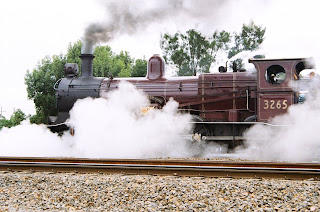So the turntable adventure continues. The base section it sits on has been reinforced. It now is strong enough to act as a separate module allowing it to be removed and worked on by itself. I have done my first real chiselling to carve out some of the L beam the ply baseboard sits on so that the turntable pit would sit down. I also used the chisels to cut channels for where I thought the maintenance pits would go, but as it turns out, not quite.
Since I wrote Turntables and things and Turning Tables some of you may have worked out what I had not realised and been laughing at me. I have a turntable from Walthers and a roundhouse from Atlas. According to my 2009 N&Z Walhters catalogue, the Union City roundhouse intended for the Walthers 120' Unions City turntable has a stall angle of 7.5 degrees. The stall angle of the Atlas roundhouse is 15 degrees.
So once I had things set up enough to line up pit tracks to the table, I could see I had a problem. The track had a kink betwixt pit and turntable and not one that was within tolerances and visually quite wrong. So what's a bargain hunter to do? Buy the matching roundhouse? (Buying the Atlas turntable was not an option for me given how un-prototypical it looks, as mentioned in previous postings) The matching roundhouse comes with 6 stalls not three and so would need to be kitbashed to suit regardless of whether it fitted into the space I had. Given I would need to kitbash a new kit, I decided to try my hand at kitbashing what I had instead. With my trusty new saws with many teeth and thin kerfs, it should be simple right?
I have yet to match up the roundhouse walls etc. and I foresee that the doors may require some trickery or adjusting but I am very pleased with how the tracks line up now. Compare the stall/pit to table/bridge transition that appears on the left in the pictures (that lines up pretty well after adjusting) to the stall/pit to table/bridge transition that appears on the left in the pictures (which totally does not line up)



Since those photos were taken, the not matching track has also been adjusted by what seems pretty close to the right amount. So far then I am very happy with the results and look forward to finding the right height to raise the turntable bridge track to line up with the pit/stall tracks. But all that will have to wait for the next instalment pertaining to turning tables, thank you Adele!










































